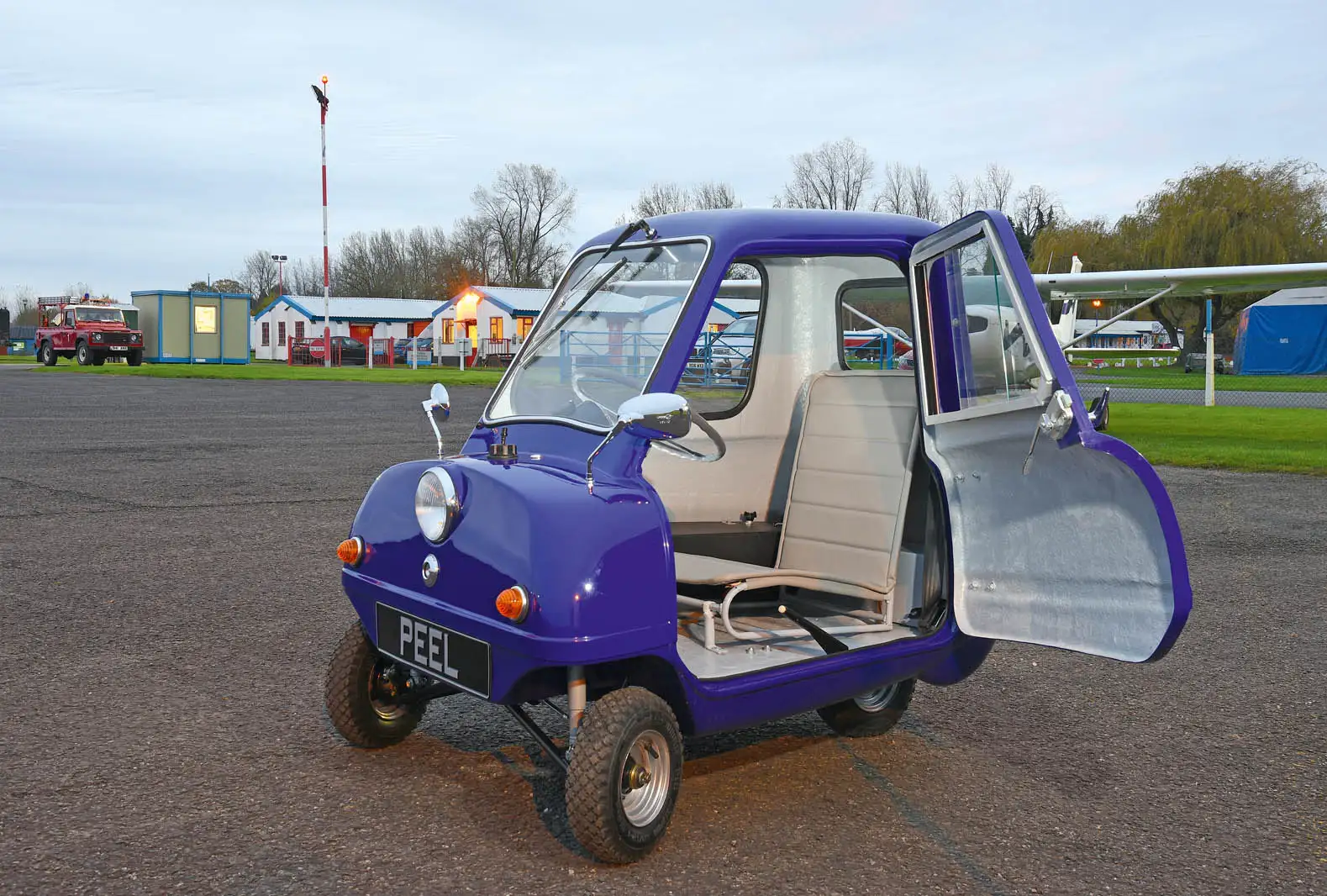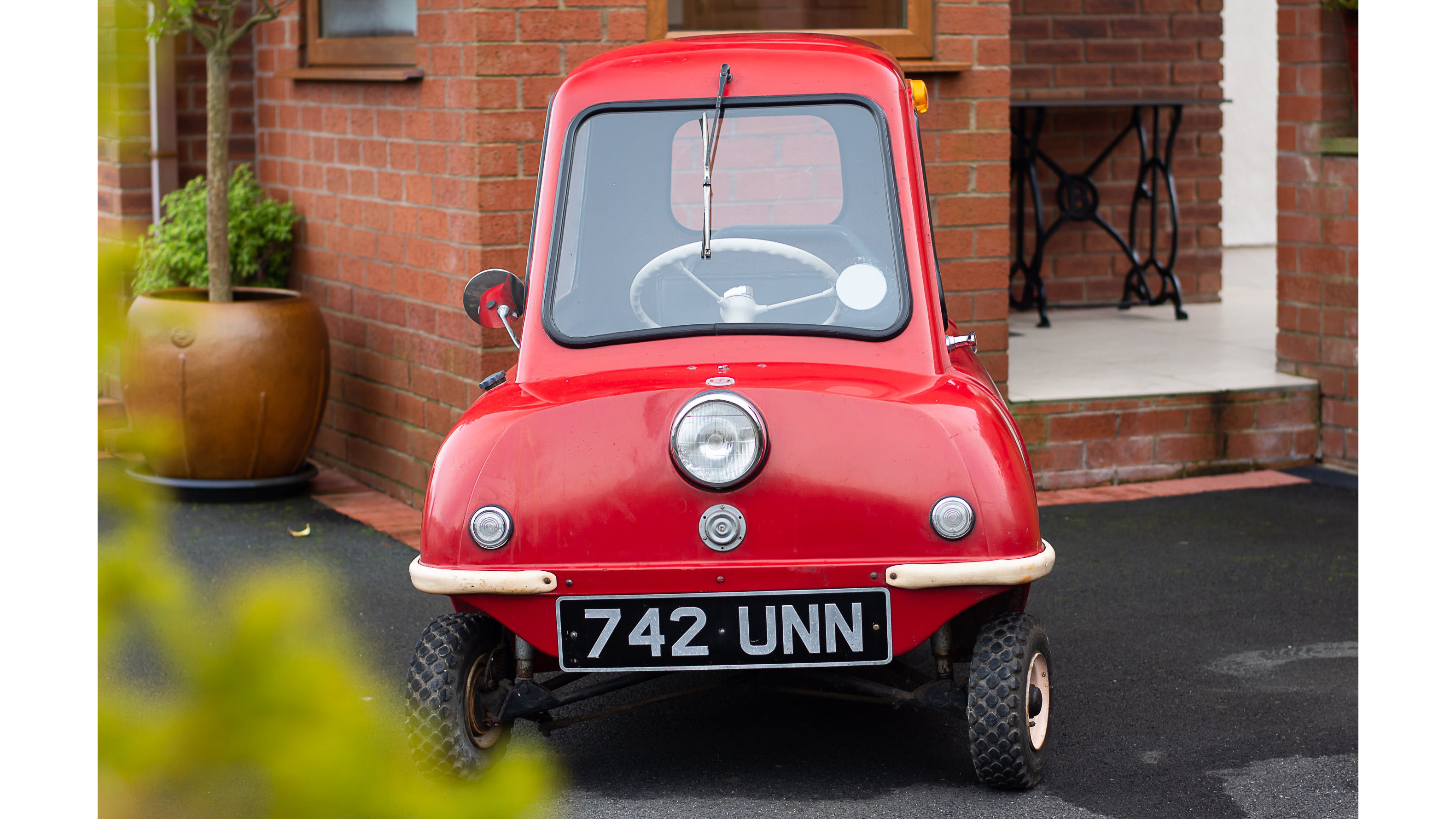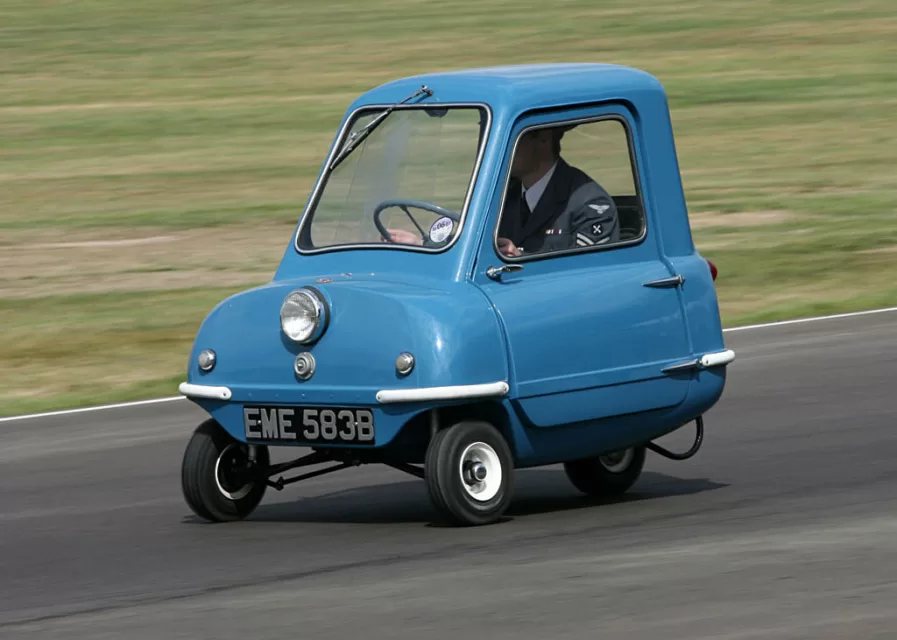Peel P50 – The World’s Smallest Production Car
The tiny Peel P50 holds a place in history as the world’s smallest production automobile. Manufactured from 1962-1965 on the Isle of Man, the single-seat P50 measured just 55 inches long and 48 inches wide. Weighing a mere 130 pounds, the P50 exemplified extreme microcar minimalism in its quest to provide ultra-efficient personal transportation. Its unique size and unconventional design earned the Peel P50 iconic status as an engineering oddity and collectible classic.
Microcar Concept
The Peel Engineering Company set out to build a tiny commuter car maximizing efficiency and minimizing materials. The three-wheeled P50 emerged with room for just a single driver in its fiberglass monoform body shell. Power came from a 4.7HP 49cc DKW moped engine, enough for a top speed of 28mph. The P50’s dimensions enabled effortless maneuverability on narrow streets. With a gas-sipping economy, it could cover over 200 miles per gallon. The P50 distilled personal transport to its functional essence as a super-compact commuter pod.
Avant-Garde Styling
The P50’s subjective styling appeared stripped to the fundamentals. Its rounded contours enclosed a teardrop-shaped cabin with a single door and two tiny wheels in front. Vertical cutouts for the wheels exemplified function-over-form priorities. The lone headlamp and taillight related the Peel’s minimalist ethos. Available in bold 1950s two-tones like red and cream, the P50’s whimsical shape and colorful schemes lent it quirky visual appeal belying its utilitarian underpinnings.
Spartan Yet Innovative Construction
The P50’s fiberglass unibody weighed just 57 pounds by itself. An exposed tube frame contained the drivetrain and lone suspension coil spring. Inside, extensive wooden framing served as the floor and dashboard. The stamped steel side rails completed the basic structure. Despite its crude appearance, the monocoque design and operating door hinted at advanced thinking. For such a stripped-down mobility solution, the P50 incorporated a surprising degree of innovation and modern construction.
Peel P50 Surprising Performance and Handling
In contrast to its size, the P50 delivered an unexpectedly stable, engaging driving experience. The wide front track combined with low weight and a low center of gravity give it a tenacious grip. The turning circle was just 13 feet thanks to the short wheelbase. Slowing required planning with just one bicycle-sized drum brake up front. But the tiny 4.7HP engine enabled the P50 to scoot surprisingly quickly up to its 56km/h top speed. On city streets, the spritely P50 made up for its barebones accommodations through agility.
Peel P50 Lasting Cultural Fascination
The whimsical Peel P50 captured the public imagination through its sheer uniqueness. It became a fixture on 1960s British television and shows like The Avengers to exemplify its era’s space-age optimism. The 1975 book “The World’s Smallest Car” spread its story globally. Quirky microcars had faded by the 1970s, but the P50’s diminutive size and feel-good personality gave it lasting cultural resonance. Just fifty years from its debut, the Peel P50 continues to charm old and young generations alike as an enduring automotive novelty.
Record-Setting Diminutive Dimensions
In 2010, the P50 officially received the Guinness World Record title as the smallest production car ever made. While some custom-built vehicles may be more compact, the P50 stands alone as the tiniest functional auto from a major manufacturer. Its 3.3-foot width typically qualifies it as a motorcycle in licensing. The P50 exemplified microcar minimalism decades before the Smart Fortwo. Sixty years after its debut, the whimsical Peel P50 remains in a category of its own as the quintessential tiny automobile.





